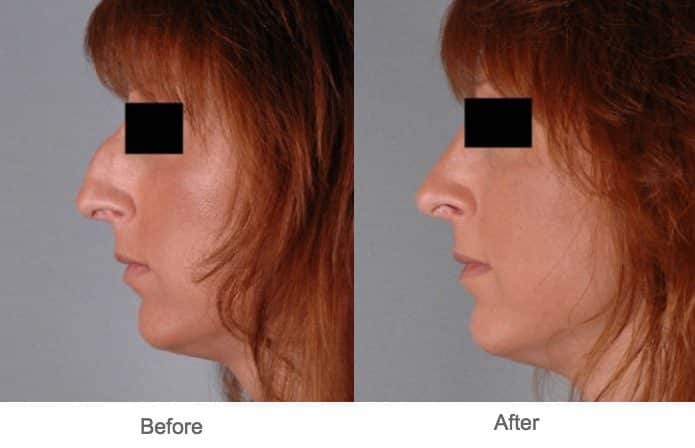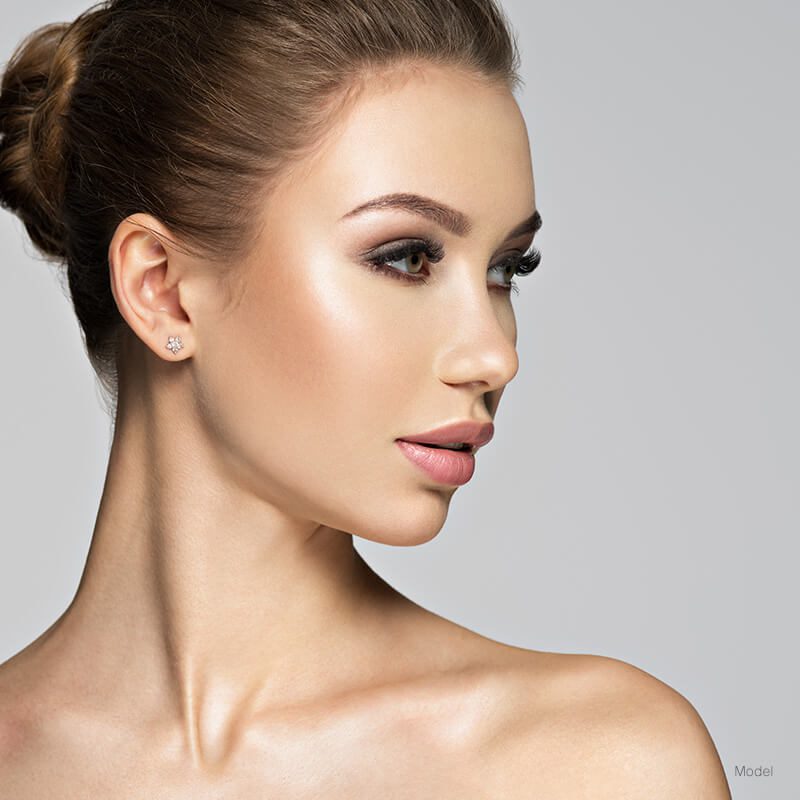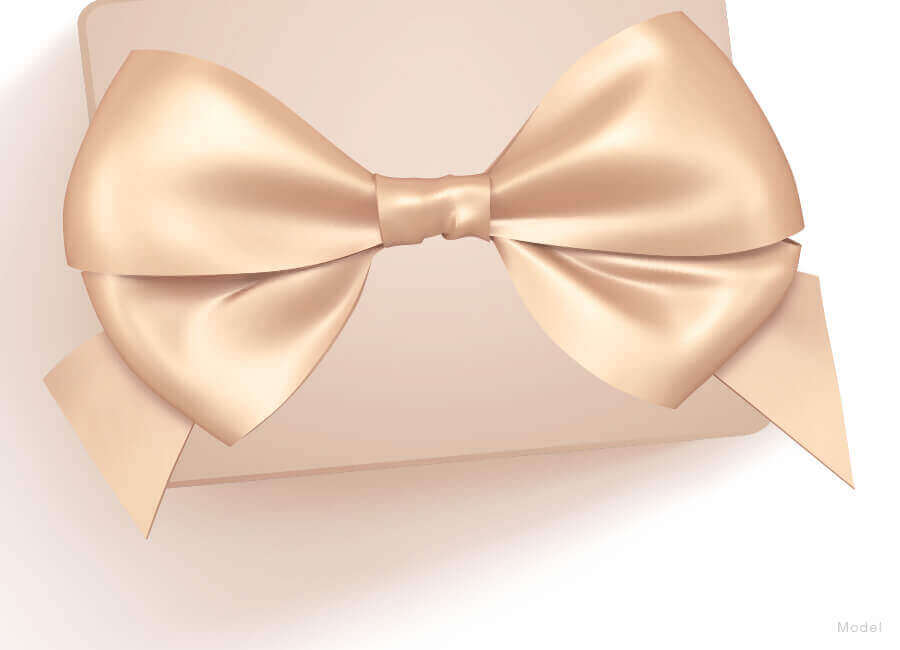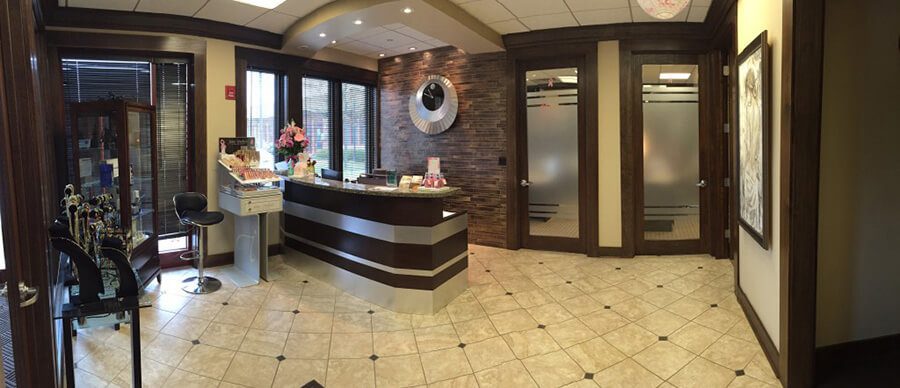Rhinoplasty
Rhinoplasty Procedure
The nose is the most prominent feature on the face, and it helps to create a balance among the other facial structures. For many, their nose is not in proportion to their other facial features, and when this happens, some people are bothered by the distraction of this facial feature. In most instances the size, shape, and length of the nose are the result of heredity, or possibly a facial injury. Rhinoplasty, also known as a “nose job” or nose surgery, is the surgical procedure performed by Dr. Schlechter in Illinois used alter and improve the shape of the nose. It is one of the most commonly performed cosmetic surgical procedures. This procedure can reduce or increase the size of the nose, remove an unwanted hump, change the shape of the tip or the bridge, narrow the width of the nostrils, or change the angle between the nose and the upper lip. In general, nose surgery improves the proportion of the nose, thus enhancing the harmony between facial features, and subtly a person’s overall appearance. The procedure is also used to correct problems resulting from injury and can help relieve certain breathing difficulties, however, this portion of the procedure may be deemed medical. Rhinoplasty can be done at any time once nasal growth is complete. In women, this usually occurs by age fourteen and in men by age sixteen. Our patients range from 15 to 65, as it is never too late to change something about yourself that really bothers you. This can significantly impact your self-confidence. If you are one of those people who have gone through life self-conscious about the appearance of your nose or suffered from an injury that altered the shape, then rhinoplasty may be the ideal solution for you.


Am I a good candidate?
The best candidates for nose surgery are people who are looking for enhancement of their looks – not perfection. You should be at least 14 years of age (after your growth spurt), in good overall health, and have realistic expectations about the procedure. Although there are many reasons for nose surgery, you might be a good candidate if you suffer from one or more of these concerns:
- disproportionate nose for the size of your face
- crooked or off-center nose
- bump on the bridge of the nose
- overly wide nose when viewed from the front
- abnormally large or flared nostrils
- tip that droops or plunges, or is thickened or enlarged
- asymmetrical nose due to injury or disease
- problems breathing due to structural defects
Even the slightest alteration to the shape and size of a person’s nose can make a dramatic difference in their appearance. For individuals who have an issue with the appearance of their nose due to facial trauma, it is important to remember the best time to fix the defect is when the injury occurred. Improvement can often be achieved in these cases, but it is difficult to correct a defect that occurred from a nasal fractures years earlier that was never treated. Our doctor also performs rhinoplasty revisions, which means he corrects the work done by another surgeon for patients that want additional correction. Not all plastic surgeons perform revisions as they are much more challenging. The doctor will try to be clear with the patient that the expectations for what can be achieved for improvement is realistic.
The Procedure
There are two different approaches to performing nose surgery and depending on when and where the surgeon was trained typically determines which approach they use. Rhinoplasty may be performed as an “open” or “closed” procedure. Open surgery requires that the surgeon makes a small incision at the columella, the small wall of tissue that separates the two nostrils. The advantage of the open approach is that the doctor is operating in full view of the internal structures and better results can be achieved. With the closed approach, which is actually the older method used for this procedure, the correction is made by going through the open nostrils and is actually more challenging as the structures are not clearly visible. A scar from open surgery is quite small and typically heals nicely and is very unnoticeable. Our plastic surgeons perform primarily open rhinoplasties, however they are capable of using the closed approach if it were indicated for a particular patient. The procedure can take from 1 to 2 hours depending on the complexity of the case. A revision rhinoplasty always takes a little longer as the procedure is more complicated. The rhinoplasty procedure is performed in the privacy of our state licensed in-office surgical suite under IV sedation. After the surgery is complete, a splint is then applied to help the nose maintain its new shape. Nasal packs or soft splints may be placed in the nostrils to stabilize the septum and/or the nasal bones if necessary. The packing if needed is typically removed the following day, and the splint remains on for 1 week.
The Recovery
After nose surgery, particularly during the first twenty-four hours, your face may feel puffy, your nose may ache, and you can experience a dull headache. The pain is typically minimal and is easily controlled with pain medication. You will be asked to sleep with the head of your bed elevated and apply ice to reduce bruising and swelling. Some bruising around the eyes is not uncommon and usually fades by one week. You may have internal packing in your nostrils, and the nasal splint is typically worn for a week, to provide added stability as the structures begin to heal. The stitches under the nose are often taken out at 1 week, if dissolvable sutures have not been used. The fine scar is barely visible after a few weeks and continues to fade over time. Usually the new shape of the nose is readily apparent after surgery and much of the swelling resolves by 3 weeks. However, it can take up to a full year to see the final results of the procedure, as subtle swelling dissipates allowing the nasal skin to conform to the new underlying framework of the nose. Typically light activity including office type work can resume at 5- to 7 days, and patients are eased back into the full pre-surgery routine at 3 to 6 weeks. It is imperative that the patient not bump or traumatize their nose for several weeks post-surgery to insure the best result possible.
Rhinoplasty
Frequently Asked Questions
-
Will Insurance Cover My Nose Surgery?
Whether or not health insurance will cover the cost of rhinoplasty is often determined by whether the reasons for the surgery are medical or aesthetic. For those who have suffered an injury or congenital defect, corrective surgery may be covered by insurance. If a patient simply wishes to have a more sculpted, symmetrical nose to improve his or her appearance, the nose surgery may be considered “elective,” requiring the patient to find alternative means of financing the procedure. Many patients have both functional and aesthetic concerns. The surgery is performed to correct any airway issues and to improve the overall appearance. Those portion of the surgery devoted to airway restoration is frequently covered by insurance companies while the aesthetic portion of the surgery is considered cosmetic, and is not covered by insurance. Obviously, it makes sense to carry out both procedures at the same time, satisfying all of the patient’s objectives. Typically defects that result from an injury years prior will usually be denied for insurance coverage stating it is for cosmetic reasons.
-
What are the benefits of rhinoplasty?
Rhinoplasty can be a life-changing procedure for people who are lacking confidence due to structural / aesthetic issues with their nose. People who may have avoided the public eye due to self-consciousness may suddenly discover a newly gregarious, outgoing side to their personalities. The benefits of surgery of the nose are multidimensional.
-
What can I expect to discuss at the consultation?
The success and safety of your nose surgery depends very much on your complete candidness during your consultation. You’ll be asked a number of questions about your health, desires and lifestyle before rhinoplasty surgery. For instance, the doctor will want to know why you want the surgery, your expectations and desired outcome. You will be asked about previous surgeries, medical conditions, drug allergies and previous medical treatments. Be sure to bring a list of your current medications, vitamins, and herbal supplements that you take. Our doctor will also evaluate your general health status and any pre-existing health conditions or risk factors. He or she will examine your face and take photographs for your medical record. The doctor will discuss your options and recommend a course of reshaping your nose. Last, as with any surgical procedure, the doctor will discuss likely outcomes of a nose surgery and any risks or potential complications. In some cases it is possible for the doctor to perform a Vectra 3dD Imaging to give you an indication of how the nose will look after the surgery, but this is only a simulation. This tool is used to show patients their profile after removing a bump, or why they may need a chin implant as well to balance out their facial features, in addition to the rhinoplasty.
Terms to Know
Cartilage – Connective tissue that provides structural support to parts of the nose.
Columella – The narrow strip of tissue that separates the nostrils.
Deviated septum – Cartilage that separates the nostrils is misaligned which may cause partial nasal airway obstruction. This if anything is covered by insurance if the patient has this condition.
Rhinoplasty – Surgery to reshape the nose.








